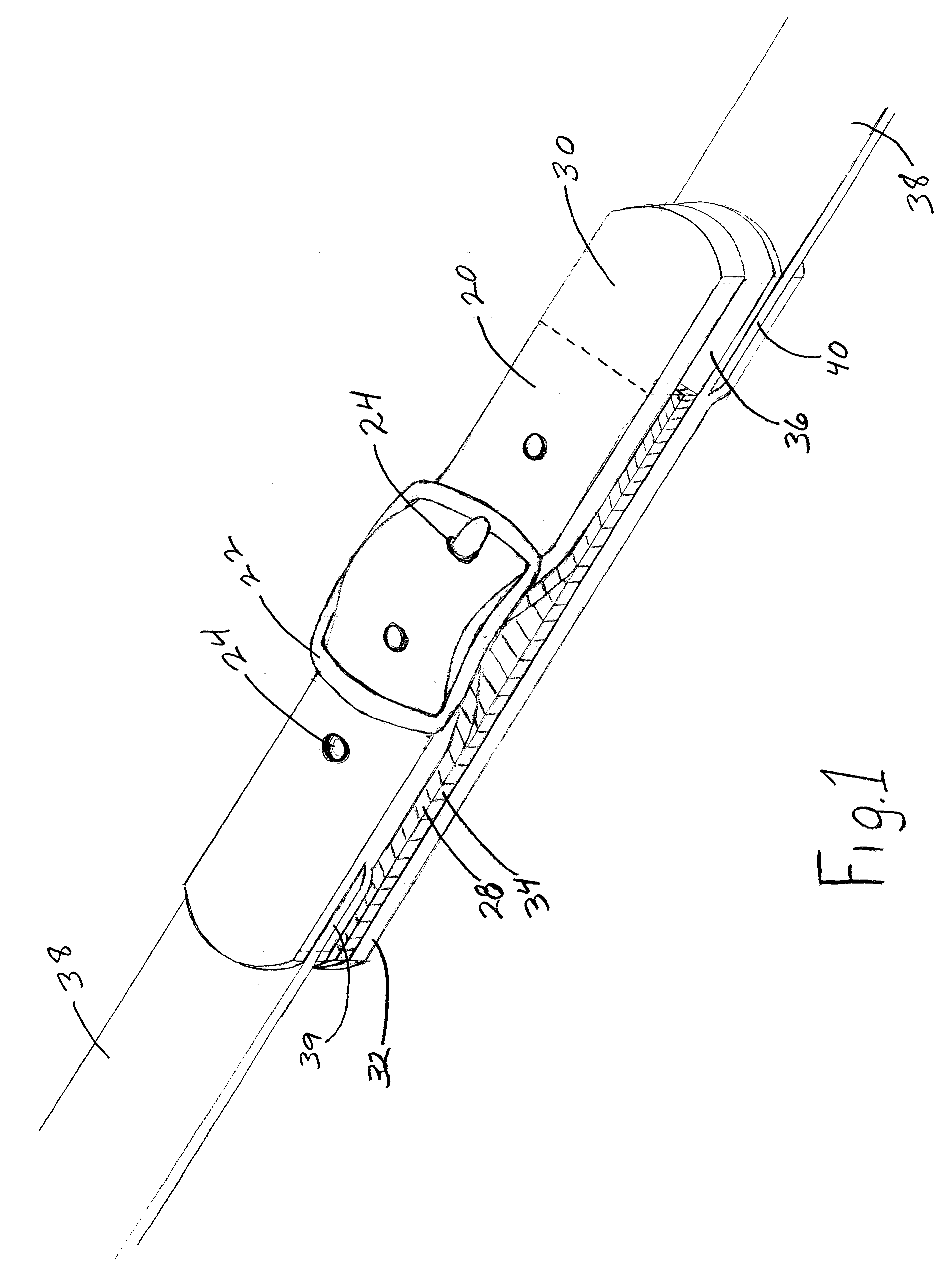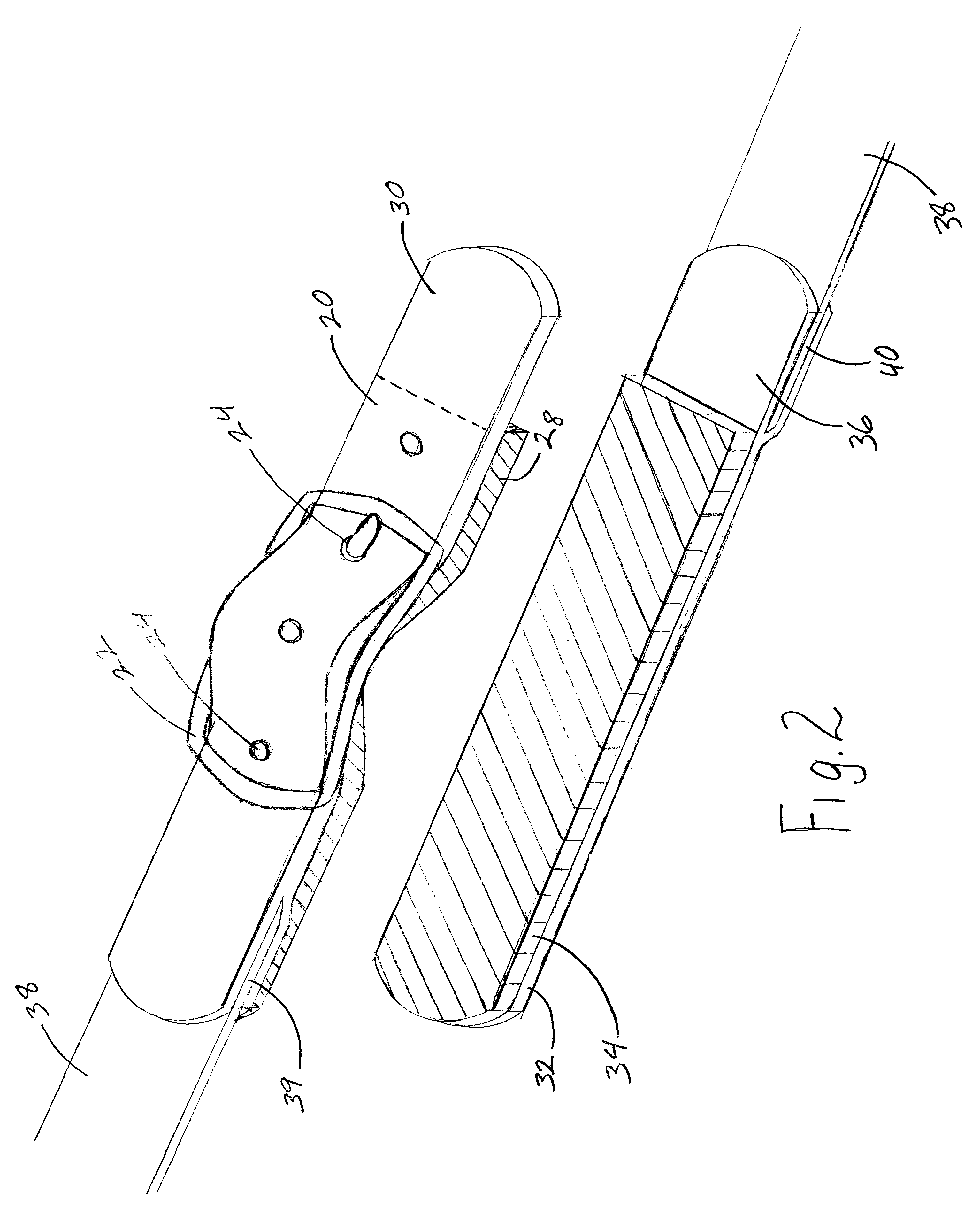Apparel belt fastening tabs
a technology of belt fastening and tabs, which is applied in the direction of garment fasteners, garment belts, garment suspenders, etc., can solve the problems of cumbersome use of conventional belts, difficulty in dexterity required to use the prior art described above, and difficulty in hand and wrist mobility
- Summary
- Abstract
- Description
- Claims
- Application Information
AI Technical Summary
Benefits of technology
Problems solved by technology
Method used
Image
Examples
Embodiment Construction
FIG. 1 shows a perspective view of a basic version of our belt fastener. The two main components of the belt fastener are an elongated front end-tab 20 and an elongated rear end-tab 32. One end of a torso-encircling strap 38 is permanently attached to the left end of front end-tab 20 and the other end of the same strap 38 is permanently attached to the right end of rear end-tab 32. FIG. 1 shows front end-tab 20 and rear end-tab 32 releasably attached to each other in an overlapping fashion. FIG. 1 also shows buckle 22 in place.
FIG. 2 shows a perspective view of our belt fastener in which front end-tab 20 and rear end-tab 32 have been separated by disengaging Velcro hooks 28 from Velcro loops 34. FIG. 2 also shows buckle 22 in place. Note that Velcro hooks 28 do not cover front end-tab 30 completely. This uncovered area forms front tab pull-grip 30. Note that Velcro loops 34 do not cover rear end-tab 32 completely. This uncovered area forms rear tab pull grip mate 36.
FIG. 3 shows an ...
PUM
 Login to View More
Login to View More Abstract
Description
Claims
Application Information
 Login to View More
Login to View More - R&D
- Intellectual Property
- Life Sciences
- Materials
- Tech Scout
- Unparalleled Data Quality
- Higher Quality Content
- 60% Fewer Hallucinations
Browse by: Latest US Patents, China's latest patents, Technical Efficacy Thesaurus, Application Domain, Technology Topic, Popular Technical Reports.
© 2025 PatSnap. All rights reserved.Legal|Privacy policy|Modern Slavery Act Transparency Statement|Sitemap|About US| Contact US: help@patsnap.com



